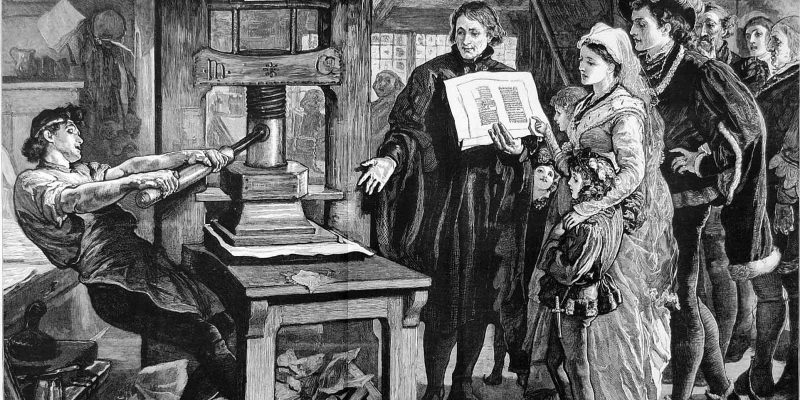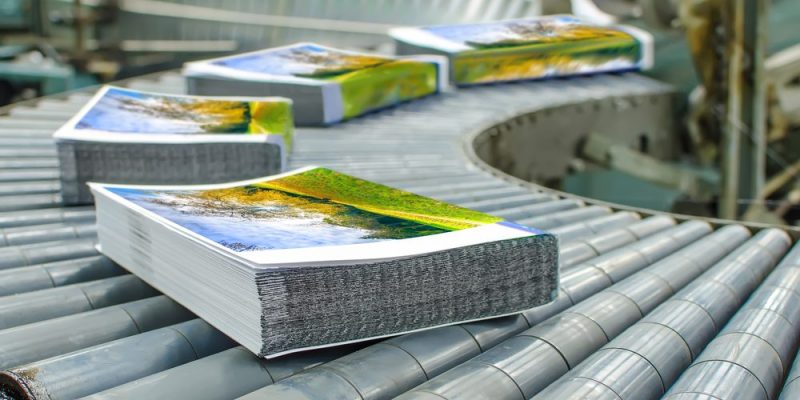We explain what the printing press is and what it is for. What was its origin, and why is it so important. Types of printing presses.

What is Printing?
The printing press refers to a mechanism capable of reproducing texts and images on a medium of paper, fabric or other materials, in order to produce them on a large scale.
Initially it operated based on two metal plates between which the material to be printed was introduced, and on which the typographic molds (letters) had been distributed and inked in the correct order of the text. The plates were then pressed and the text was marked on the surface.
The printing press It was invented in the 15th century and perfected over the centuries but since then it has allowed the serial reproduction of books, magazines, brochures, clothing and other articles with texts and images, through various pressing and inking methods.
See also: Origin of the media
Types of printing presses

Much later, thanks to the Industrial Revolution and new technologies, more sophisticated forms of printing emerged. Today there are different types of printing press, such as:
- Offset The “traditional” printing press, although very far from that invented in the Middle Ages, is the fruit of centuries of process improvement, thanks to technological advances. It operates based on letterpress plates with four different inks (based on their colors, or CMYK).
- Digital Taking advantage of the computer revolution, the printing press was renewed to incorporate virtual technology and rapid data transmission. Home and portable printers from an ordinary PC are a good example, which operate based on other principles such as laser or inkjet.
- Rotary The printing presses in which the newspaper is made, equipped with large mobile rollers between which the paper is pressed, to quickly produce hundreds of sheets of newspaper or other formats.
Origin of the printing press
The printing press had numerous antecedents, in the different seals and inscriptions invented by ancient cultures to manage their bureaucracy or reproduce ceremonial illustrations. The Chinese, for example, who had made rice paper invented in the 11th century a porcelain system that allowed their characters to be reproduced using porcelain molds. But the modern printing press as such emerged around 1450 from the hand of Johannes Gutenberg.
Although the young German was the first to organize a typography and proceed to serial printing, many others had tried it previously, which is why Mentelin of Strasbourg (1410-1478), the Italian Castaldi, is also credited with merit in this invention. , his compatriot Aldo Manuencio, and the Dutchman Lorenzo de Coster (1370-1430).
What is the printing press for?

The printing press is used to produce books, magazines, pamphlets, brochures, fabrics, clothing and many other objects equipped with texts and images in a massive way: fast, efficient and economical. This was thanks to a system of moving plates that, when pressed, could reproduce the same page multiple times, then the next and then the next, until obtaining several sets that, when combined, made up several copies of an entire book. The first book to be made in this way was the Bible.
Nowadays, technology has changed the printing press but the principle remains the same: rotary printing presses, for example, on which newspapers are printed, have large moving rollers through which hundreds of sheets of paper pass, which are inked and then dried, folded and distributed. None of this would have been possible without the invention of the printing press in the 15th century.
Features of the printing press
The printing press initially had the following characteristics:
- He copied the model of the rubber stamps of antiquity, pressing the paper between metal plates.
- This pressure came from a screwing system that prevented the paper from moving and generated enough force to print.
- The letters were movable types, that is, metal molds that had to be arranged in the correct sequence to reproduce the text.
- Initially he incorporated woodcut and other traditional techniques due to limitations in the typographic mold.
- The printing press was perfected in the 19th century, thanks to the invention of the linotype machine by Ottmar Mergenthaler.
Importance of printing
At the time of its invention, books were copied manually as unique copies which took an enormous amount of time and effort per specimen, making them rare and expensive objects. The appearance and subsequent improvement and popularization of the printing press meant a true revolution, which made the book more economical, popular and massive.
This, in turn, impacted access to literature and education laying the foundations for a more literate European society. It is possibly one of the most revolutionary inventions in history and one that forever changed the order of knowledge in the world.





